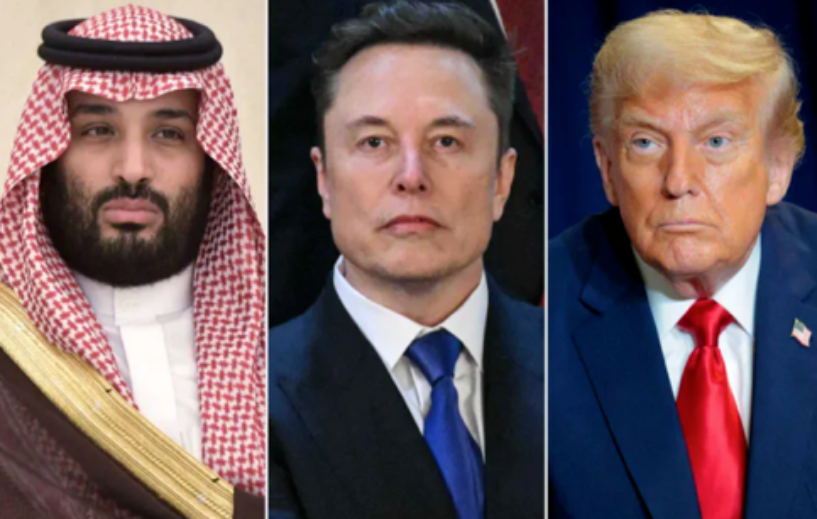The once high-profile establishment of the U.S. Department of Government Efficiency has quietly come to an end, and the relationship between Musk and Trump, intertwined with interests and power, has experienced a rollercoaster of fluctuations.
On November 23, local time, the "Department of Government Efficiency" (DOGE), established on the first day of Trump's presidency and led by Musk and Ramaswamy, was quietly dissolved with eight months remaining on its contract.
The Director of the U.S. Office of Personnel Management confirmed that it has "ceased to exist," and its multiple functions have been taken over by the Office of Personnel Management. This department, which once vowed to cut federal spending, began amidst controversy and ended in silence.

I. The Rise and Fall of the Department
The Department of Government Efficiency lasted only ten months from its establishment to its dissolution. On January 20, 2025, Trump signed an executive order on his inauguration day to form this advisory committee. The former head of the department was Elon Musk, with Amy Gleason as the acting director.
● The department was a temporary entity, not a formal U.S. federal government agency, and could only provide advice and guidance externally. According to the original plan, this department was to be dissolved by July 4, 2026.
● The establishment of the department stemmed from a concept of a "Government Efficiency Committee" proposed by Musk and Trump during a live broadcast on social media X in August 2024. Musk expressed his desire to lead this department to combat wasteful practices within U.S. government agencies.

The actual effectiveness of the department during its existence fell far short of expectations.
● According to data from the department's website, as of April 20, the department had saved approximately $160 billion for the federal government. However, this accounted for less than one-fifth of Musk's previously announced goal of cutting $1 trillion in federal spending.
● Despite implementing large-scale layoffs, agency shutdowns, contract reductions, and cuts to public services, spending by the current administration has increased compared to the same period last year. On November 23, it was reported that the department had been quietly dissolved with eight months remaining on its contract. Previously, department personnel had gradually vacated headquarters during the summer, further deepening external judgments about its premature termination.
II. Radical Reforms
● The department took a series of radical measures within just a few months. On the evening of February 2, the department launched a raid and officially "took over" the U.S. Agency for International Development (USAID), which has a history of over 60 years, and prepared to shut it down.
● Shortly after midnight on February 3, employees of USAID received an email informing them that they would not need to return to the Washington headquarters the next day.
● On February 3, media reports indicated that the department was considering dissolving the U.S. Department of Education through executive means.
● On February 6, sources revealed that the Trump administration planned to reduce the total number of global employees at USAID from over 10,000 to 294, with the department leading the execution of this plan.
● On February 7, Trump stated that he had instructed the department team to review the spending of the U.S. Department of Defense.
III. Initial Conflicts
The department's radical actions quickly sparked backlash from multiple parties. In February 2025, Trump assigned the department to audit over a dozen federal government departments, including the U.S. Department of the Treasury and the Department of Defense, leading to a wave of conflict and lawsuits between the two parties in the U.S.
● U.S. media expressed concerns that after the department began its actions, American politics had descended into chaos, potentially triggering a "constitutional crisis." Some Democratic lawmakers issued an open letter calling for an investigation into Musk and the department, claiming it "could threaten national security."
● On February 7, CNN obtained an internal threat assessment from the U.S. Department of the Treasury. The assessment indicated that the department's access to the Treasury's central payment system posed "an unprecedented internal threat risk" to Treasury information.
IV. Musk's Departure
● By the end of May, there was a significant change in Musk's relationship with the department. On May 28, Musk announced on social media that his term as a "special government employee" had ended.
● On May 29, Trump posted on social media that May 30 would be Musk's last day at the Department of Government Efficiency.
● White House Press Secretary Caroline Levitt stated on May 29 that cabinet members "have been working closely with Musk and will continue to work with the politically appointed employees of the Department of Government Efficiency." Musk's radical layoffs and budget cuts during his time at the department drew widespread criticism.
V. The Root of the Split
The direct trigger for the rupture between Musk and Trump was a bill called "Big and Beautiful." In early June, Musk vehemently criticized the "Big and Beautiful" bill pushed by Trump on social media. Musk called the bill "absurd" and "disgusting," claiming it would lead to a $2.4 trillion increase in the U.S. fiscal deficit.
● The "Big and Beautiful" bill is a massive tax and spending bill that includes a $5 trillion tax cut plan and a $780 billion reduction in medical assistance, while raising the debt ceiling by $4 trillion.
● Two aspects of the bill particularly stung Musk: the elimination of electric vehicle tax credits and the abolition of the carbon emissions trading system. The latter was especially fatal for Tesla— in the first quarter of 2025, Tesla made $595 million solely from selling carbon credits, exceeding its net profit of $409 million during the same period.
VI. Public Conflict
● The argument between Musk and Trump became public on June 5 and quickly escalated. Trump expressed his "great disappointment" in Musk, stating that "Musk has gone mad." Musk quickly responded on social media, rebutting, "Dead wrong, this bill was never shown to me, and it was rushed through in the middle of the night!"
● Trump also threatened to cut government subsidies and contracts related to Musk's companies. In response, Musk stated that given Trump's declaration about canceling government contracts, SpaceX would immediately begin retiring its "Dragon" spacecraft.
● However, under pressure from netizens urging for reconciliation, Musk later changed his stance, stating he would "not retire the 'Dragon' spacecraft." This public conflict led to a 14.26% drop in Tesla's stock price that day, evaporating $152 billion in market value, marking the largest single-day decline in history.
VII. Signs of Reconciliation
● Less than six months after the public conflict, signs of reconciliation between Musk and Trump began to emerge. On November 19, 2025, Musk returned to the White House to attend a dinner welcoming Saudi Crown Prince Mohammed bin Salman.
● This move indicated that the tension between the world's richest man and the U.S. president had eased since their fierce disagreement earlier this year over deficit spending issues. Musk was invited as a guest to this welcome dinner, which included many business giants such as Tim Cook, David Ellison, Marc Benioff, Bill Ackman, and Jensen Huang.
● The event also featured sports star Cristiano Ronaldo, as well as Republican political leaders such as Vice President JD Vance and House Speaker Mike Johnson.

The dissolution of the department marks the end of a radical government reform experiment. From a high-profile beginning to a quiet conclusion, the existence of this temporary department was brief yet full of controversy. The relationship between Musk and Trump, much like the fate of the department, has experienced a rollercoaster from high-profile cooperation to public opposition, and then to signs of reconciliation.
The rise and fall of these two powerful figures not only reflects the competition of personal interests but also reveals the complex nature of the relationship between capital and power in American politics.
Join our community to discuss and grow stronger together!
Official Telegram community: https://t.me/aicoincn
AiCoin Chinese Twitter: https://x.com/AiCoinzh
OKX benefits group: https://aicoin.com/link/chat?cid=l61eM4owQ
Binance benefits group: https://aicoin.com/link/chat?cid=ynr7d1P6Z
免责声明:本文章仅代表作者个人观点,不代表本平台的立场和观点。本文章仅供信息分享,不构成对任何人的任何投资建议。用户与作者之间的任何争议,与本平台无关。如网页中刊载的文章或图片涉及侵权,请提供相关的权利证明和身份证明发送邮件到support@aicoin.com,本平台相关工作人员将会进行核查。


